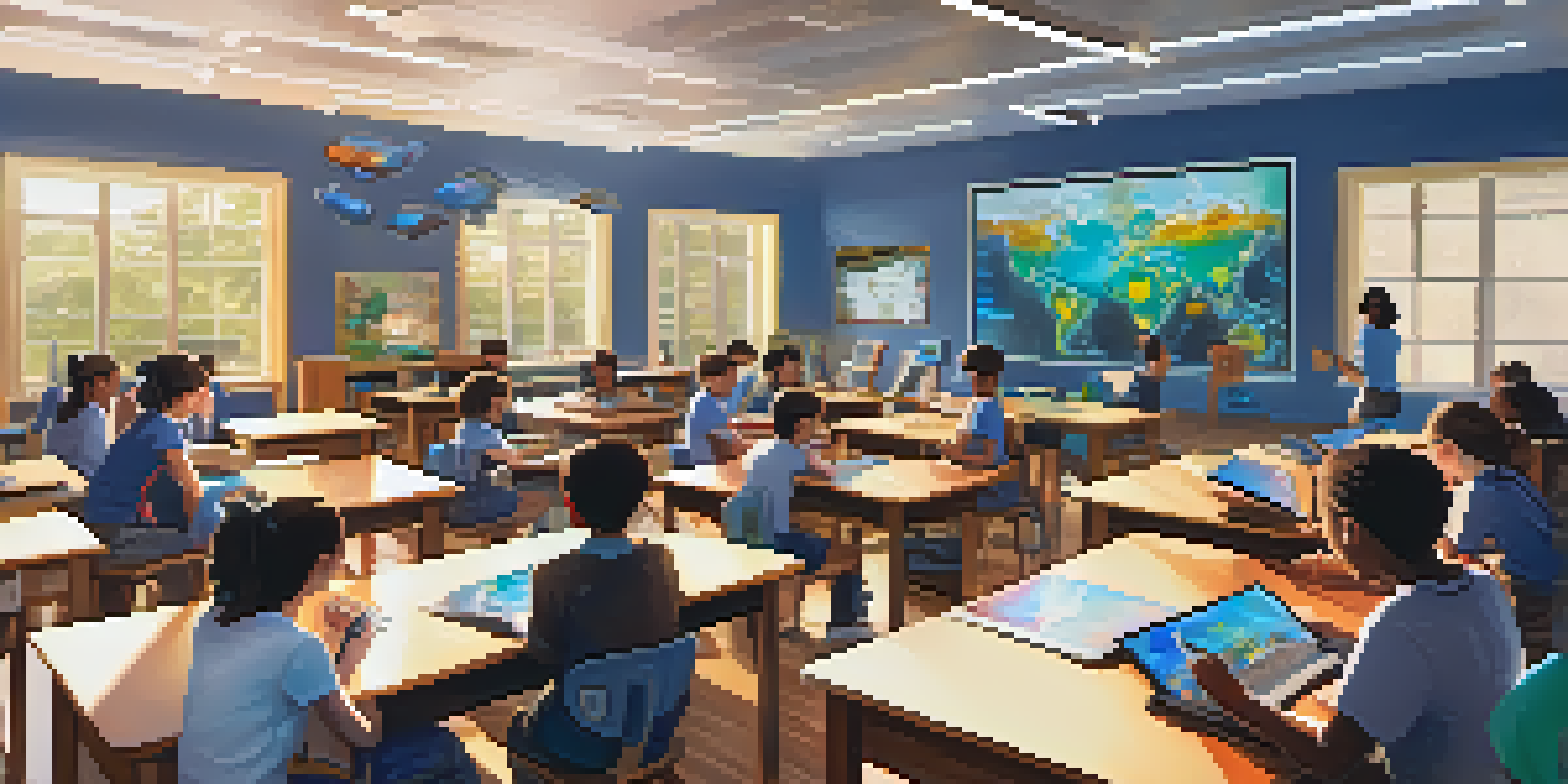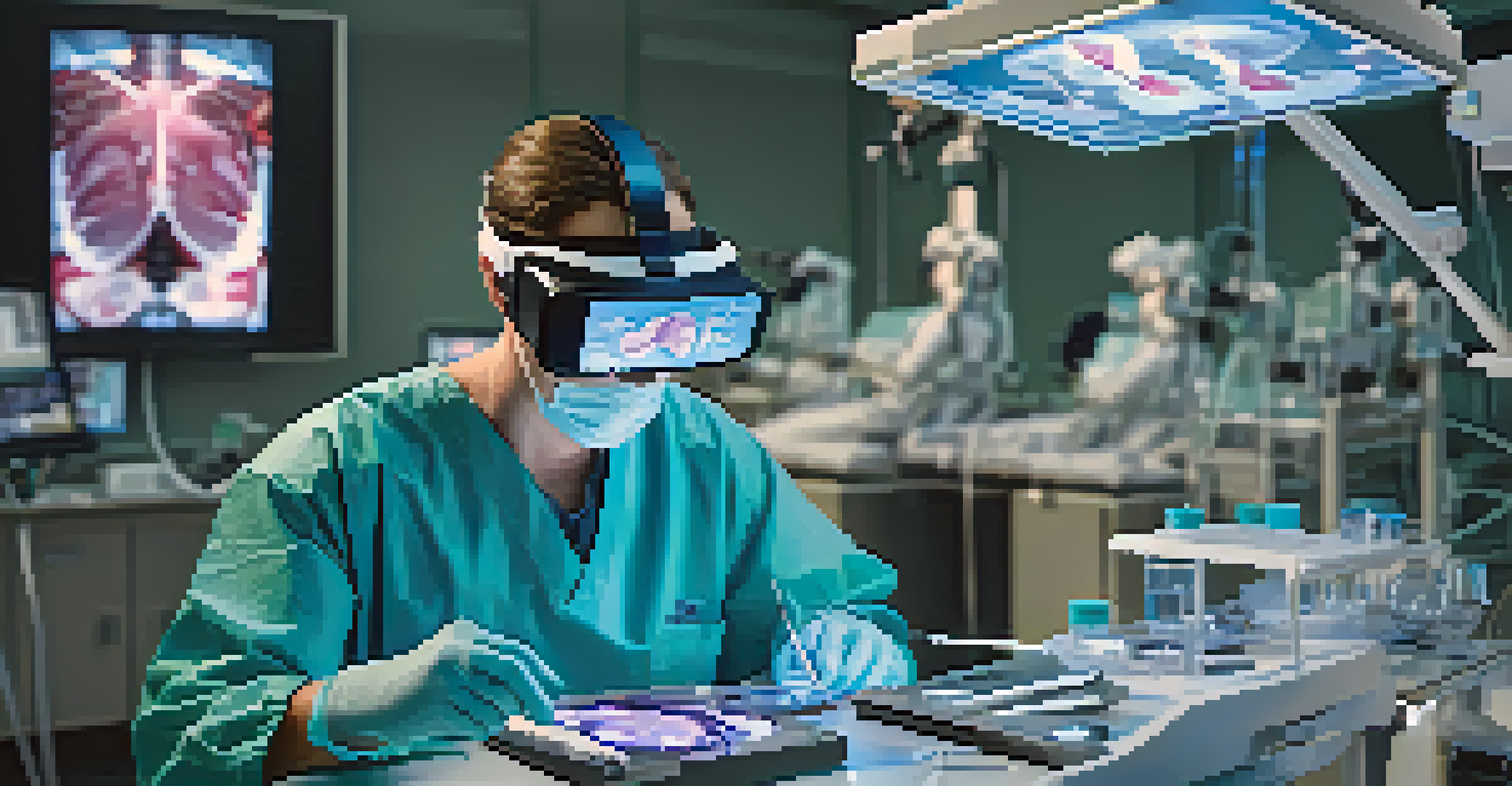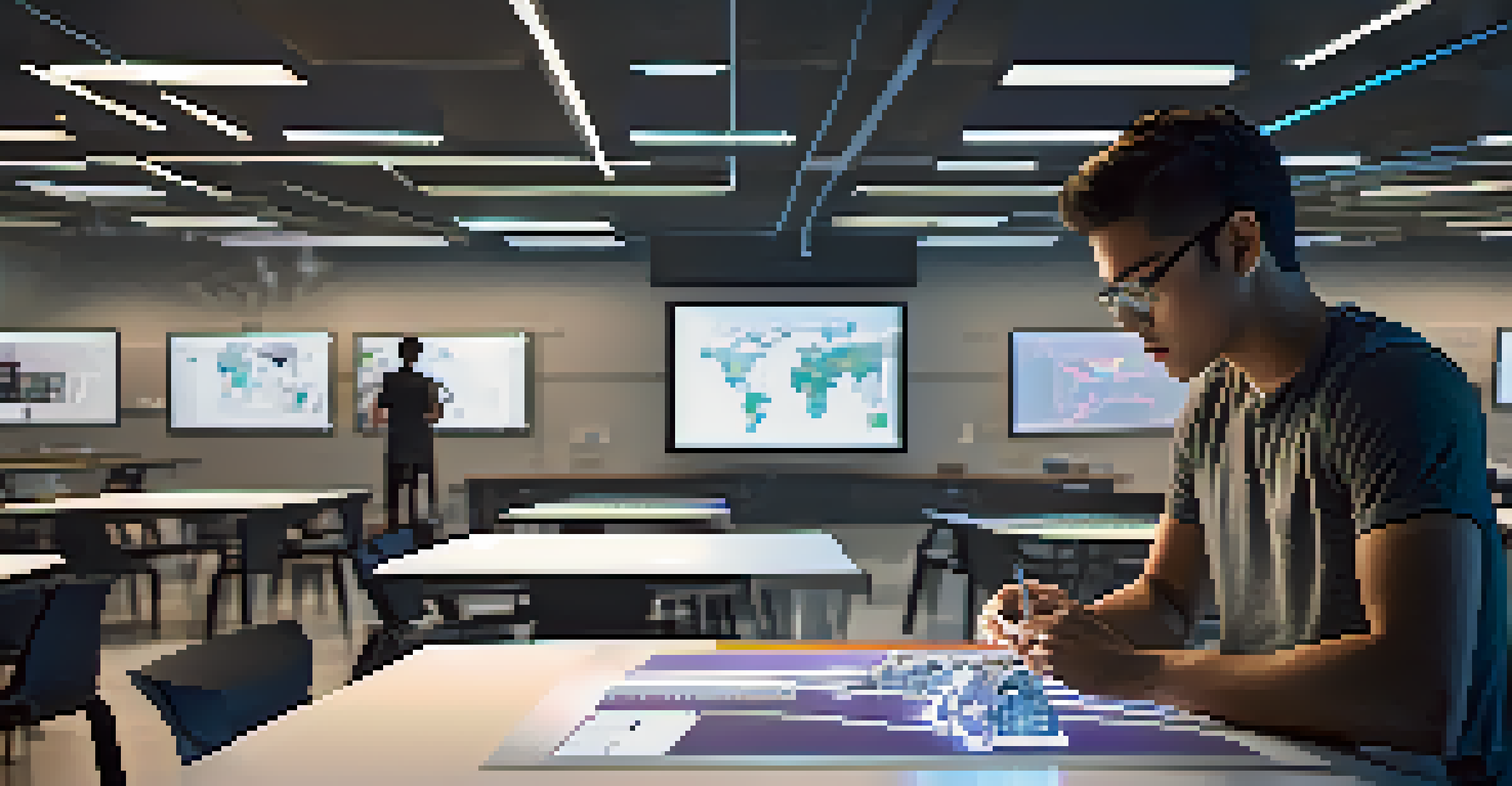The Role of VR in Enhancing Students' Spatial Awareness Skills

Understanding Spatial Awareness and Its Importance
Spatial awareness refers to the ability to understand and interact with the space around us. It plays a crucial role in our daily activities, from navigating through a room to understanding how objects relate to one another. For students, strong spatial awareness skills can enhance learning in subjects like math, science, and art.
The mind is not a vessel to be filled, but a fire to be kindled.
Without solid spatial awareness, students may struggle with tasks like reading maps or visualizing geometric shapes. This can lead to difficulties in academic performance, particularly in STEM fields. Thus, developing these skills is vital for students' overall educational success.
In today’s tech-driven world, innovative solutions are needed to foster spatial awareness in students. This is where Virtual Reality (VR) comes into play as a groundbreaking tool that can transform conventional learning methods.
How VR Technology Works in Education
VR technology creates immersive environments that simulate real-world experiences. By wearing VR headsets, students can explore these environments, interacting with 3D objects and scenarios that enhance their learning experience. This level of engagement can significantly improve retention and understanding of complex concepts.

For instance, a student studying architecture can virtually walk through a building, experiencing its layout and design firsthand. This kind of hands-on learning allows students to visualize and manipulate space in ways that traditional textbooks simply cannot offer.
VR Enhances Spatial Awareness Skills
Virtual Reality provides immersive experiences that significantly improve students' spatial awareness and understanding of complex concepts.
Moreover, VR can cater to various learning styles, making it an inclusive educational tool. Students who may struggle with conventional learning techniques can thrive in a virtual setting, where their spatial awareness skills can be honed through interactive experiences.
Real-World Applications of VR in Enhancing Spatial Skills
Several educational institutions have already started incorporating VR into their curriculums. For example, medical students can practice surgeries in a virtual environment, where they gain spatial awareness of anatomy without the risk of harming real patients. This practical application not only builds their skills but also their confidence.
Education is the most powerful weapon which you can use to change the world.
In addition to medical training, engineering students can design and test prototypes in a virtual space, allowing them to visualize their projects in a 3D context. This enhances their spatial reasoning and problem-solving abilities, critical skills in the engineering field.
Even in art classes, students can use VR to create and manipulate 3D sculptures, providing them with a unique perspective on spatial relationships. Such applications illustrate the versatility of VR in diverse educational settings, making it an invaluable resource.
Benefits of VR for Developing Spatial Awareness
One of the primary benefits of VR is its ability to engage students in a way that traditional methods often fail to achieve. The immersive nature of VR captures students' attention, making learning more enjoyable and effective. When students are actively involved in their learning, they tend to absorb information more readily.
Additionally, VR allows for repeated practice in a controlled environment. Students can revisit complex concepts and scenarios at their own pace, which helps reinforce their understanding and build confidence in their spatial abilities.
Real-World Applications of VR
Educational institutions are using VR in various fields, such as medicine and engineering, to allow students to practice and develop their spatial skills in safe environments.
Furthermore, VR experiences can be tailored to individual learning needs, ensuring that every student receives the support they require. This personalized approach can significantly enhance spatial awareness skills among diverse learners.
Challenges and Limitations of VR in Education
Despite its many advantages, there are challenges associated with implementing VR in educational settings. One significant hurdle is the high cost of VR equipment and software, which may not be feasible for all schools. Budget constraints can limit access to this innovative technology, particularly in underfunded districts.
Moreover, not all educators are trained to effectively integrate VR into their teaching methods. Without proper guidance, the potential benefits of VR may be underutilized, leading to a lackluster educational experience for students.
Lastly, some students may experience discomfort or motion sickness while using VR headsets. This can hinder their ability to fully engage with the content, making it essential for educators to monitor students' experiences and provide alternatives when necessary.
The Future of VR in Education
As technology continues to evolve, the future of VR in education looks promising. Innovations in VR hardware and software are making the technology more accessible and affordable, which could lead to widespread adoption in classrooms. This shift may revolutionize how spatial awareness is taught and learned.
Additionally, as more educators recognize the benefits of VR, we can expect to see an increase in training programs designed to help teachers integrate this technology into their curricula effectively. This will ensure that students can fully capitalize on the advantages VR has to offer.
Challenges of Implementing VR
Despite its benefits, the high cost of VR technology and the need for trained educators pose challenges for its widespread adoption in schools.
Ultimately, the integration of VR into education has the potential to create a more engaging, personalized, and effective learning environment. As we embrace these advancements, the possibilities for enhancing spatial awareness skills in students are bound to expand.
Conclusion: Embracing VR for Enhanced Learning
In conclusion, Virtual Reality is a powerful tool for enhancing students' spatial awareness skills. By offering immersive, interactive experiences, VR caters to diverse learning styles and fosters a deeper understanding of complex concepts. As educators and institutions increasingly recognize the value of this technology, we can expect to see its integration into various subjects.
The journey towards fully realizing the potential of VR in education is ongoing, but the benefits are already evident. By investing in this innovative approach, schools can help students develop critical spatial skills that will serve them well throughout their academic and professional lives.

As we move forward, it’s essential to embrace the possibilities that VR presents for education. By doing so, we can empower the next generation of learners to navigate the world around them with confidence and creativity.